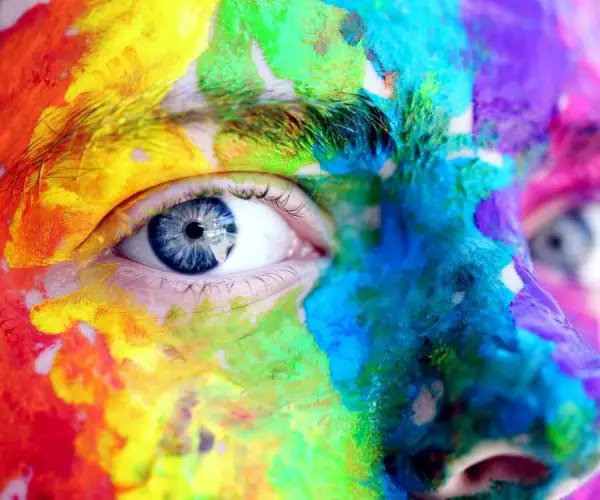The LGBTQ Movement: Throwing light on History of Advocacy and Resistance
The LGBTQ movement, also known as the Gay Rights Movement or LGBTQ rights movement, is a social and political movement for the rights of lesbian, gay, bisexual, transgender, and queer individuals. The movement has a rich history of advocacy and resistance, dating back to the early 20th century.
The Origin of the LGBTQ Movement
The origins of the LGBTQ movement can be traced back to the Stonewall riots of 1969. The Stonewall Inn was a popular gay bar in New York City, and on June 28 of that year, police raided the bar, arresting several patrons and employees. This raid, which was a common occurrence at the time, sparked a series of protests and demonstrations by the LGBTQ community. These protests, which lasted for several days, are widely considered to be the beginning of the modern gay rights movement.

In the years following the Stonewall riots, the LGBTQ movement gained momentum, with several organizations and advocacy groups being formed to fight for LGBTQ rights. These organizations, such as the Gay Liberation Front and the Gay Activists Alliance, worked to raise awareness about LGBTQ issues and to push for legal and social change.
One of the major goals of the LGBTQ movement was to secure legal protections for LGBTQ individuals. In the early years of the movement, homosexuality was still considered a mental illness by many medical professionals and was even criminalized in some states. The LGBTQ movement worked to change these laws and to educate the public about the reality of homosexuality.
In the 1980s, the LGBTQ movement faced significant challenges, including the HIV/AIDS crisis. Many LGBTQ individuals were disproportionately affected by the HIV/AIDS epidemic, and the movement worked to raise awareness about the disease and to advocate for access to life-saving treatments. The LGBTQ movement also continued to push for legal protections, and in the 1990s, several important pieces of legislation were passed. The Hate Crimes Sentencing Enhancement Act, for example, increased penalties for crimes committed against individuals because of their sexual orientation or gender identity.
There are many resources available for the LGBTQ community to learn from lived experiences of others.
The Resistance of the LGBTQ Movement
The resistance to the LGBTQ movement has a long and complicated history. Throughout the movement, LGBTQ individuals and their allies have faced significant opposition from individuals, organizations, and even governments who oppose the recognition and acceptance of LGBTQ rights.
One of the earliest forms of resistance to the LGBTQ movement came from religious institutions. Many religious organizations, particularly conservative Christian denominations, have historically opposed the LGBTQ movement and its goals. These organizations often argue that homosexuality is a sin and that same-sex relationships should not be recognized or accepted by society.
Another form of resistance to the LGBTQ movement has come from political organizations and governments. In the early years of the movement, homosexuality was still considered a mental illness by many medical professionals and was even criminalized in some states. The LGBTQ movement worked to change these laws and to educate the public about the reality of homosexuality, but they faced significant opposition from individuals and organizations who supported these laws.
In more recent years, resistance to the LGBTQ movement has often taken the form of so-called “religious freedom” laws. These laws, which have been passed in several states, allow individuals and businesses to discriminate against LGBTQ individuals based on their religious beliefs. While proponents of these laws argue that they are necessary to protect religious freedom, many LGBTQ advocates view them as a way to legalize discrimination against LGBTQ individuals.
The resistance to the LGBTQ movement has also manifested in more overt forms of violence and discrimination. LGBTQ individuals, particularly transgender individuals, continue to face high rates of violence and discrimination. In 2017, for example, the National Coalition of Anti-Violence Programs reported that LGBTQ individuals were 2.7 times more likely to experience physical violence than non-LGBTQ individuals.
Despite this resistance, the LGBTQ movement has made significant progress in recent years. The legalization of same-sex marriage in 2015, for example, was a major victory for the movement. However, the fight for LGBTQ rights continues, and the movement must continue to push back against resistance to secure full equality for LGBTQ individuals.
This impacted a lot of people. Many people came to support the LGBTQ community. Many people had to take CBT therapies. It wasn’t that easy for them to even access these facilities. However, these days, CBT therapies for the LGBTQ community are being made accessible through apps to help them deal with everyday challenges.
The Developments in the Movement
The 21st century has seen significant progress for the LGBTQ movement, with many important legal victories. In 2003, the Supreme Court struck down state laws that criminalized same-sex sexual activity in the landmark case Lawrence v. Texas. In 2015, the Supreme Court ruled in favor of marriage equality in the case Obergefell v. Hodges, effectively legalizing same-sex marriage in the United States.
Despite these victories, the LGBTQ movement still faces challenges. LGBTQ individuals continue to face discrimination in many areas of life, including employment, housing, and healthcare. In some states, LGBTQ individuals can still be fired from their jobs or denied housing because of their sexual orientation or gender identity. The LGBTQ movement continues to work to secure legal protections and to raise awareness about these issues.
Conclusion
The LGBTQ movement is a rich and complex history of advocacy and resistance. From the Stonewall riots to the fight for marriage equality, the movement has worked to secure legal protections and to raise awareness about the experiences of LGBTQ individuals. Despite the progress that has been made, the movement still faces challenges, and the fight for LGBTQ rights continues.
